高價 canon鏡頭收購 請立即與我們聯絡 收購canonRF系列,RF定焦,RF廣角,RF旅遊,收購EF-M系列,收購大三元,小三元,收購L鏡,收購Marco,二手鏡頭,全新鏡頭,鏡頭買賣,鏡頭收購 Read More ...
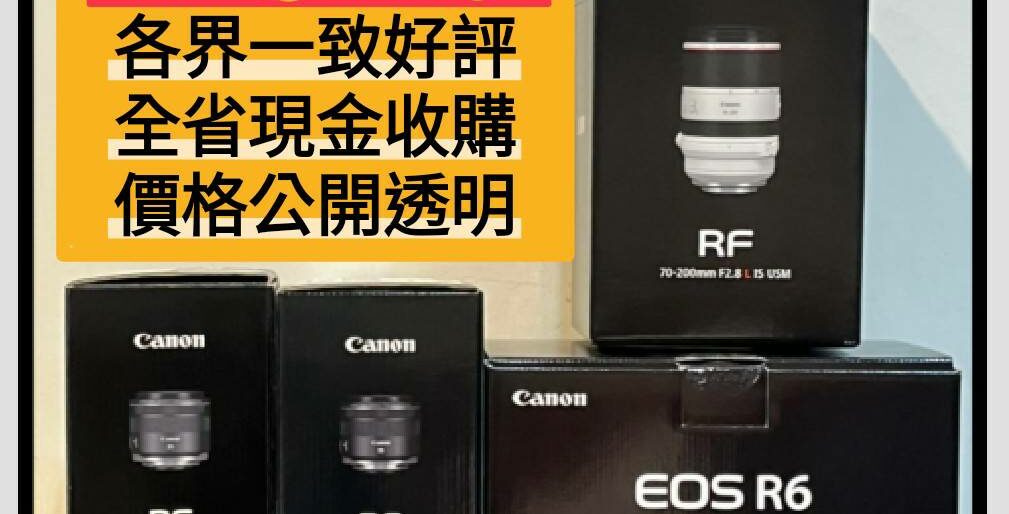
收購相機及鏡頭 您用不到相機鏡頭 不論新舊,都可以換現金 陪您走過每個黃金歲月的年頭,現在因為家庭或工作總總因素,這些可愛的相機及鏡頭寶貝們,除了躺在倉庫,安靜在防潮箱等候主人帶它們出勤之外,應該可以有個兩全其美的辦法"就是讓給有緣人",讓它再度發揮存在地球上的價值吧!
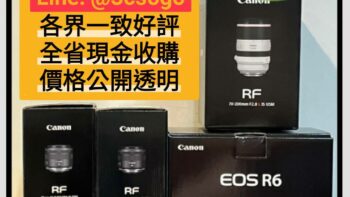
高價 canon鏡頭收購 請立即與我們聯絡 收購canonRF系列,RF定焦,RF廣角,RF旅遊,收購EF-M系列,收購大三元,小三元,收購L鏡,收購Marco,二手鏡頭,全新鏡頭,鏡頭買賣,鏡頭收購 Read More ...

線上估價 我們是專業的3C收購,高價收購您不用的3C產品,價格好不怕您比較!! 我們專業經營各項3C高價回收,清運協助,可開立單據,多通路多管道,非坊間垃圾回收價,價格不怕您比較,歡迎企業戶汰舊換新, Read More ...
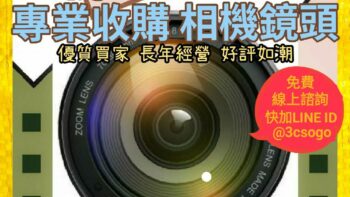
fujifilm鏡頭收購,二手鏡頭收購,全新鏡頭收購,收購nikon鏡頭,收購sony鏡頭,收購leica鏡頭,收購canon鏡頭,收購panasonic鏡頭,收購zeiss鏡頭,收購leica鏡頭, Read More ...

高價 nikon鏡頭收購 請立即與我們聯絡 收購nikone鏡頭,收購nikon z,收購nikon z 40mm,z 50mm,z 35mm,z 20mm,z 24mm,z 28mm,收購af-s Read More ...
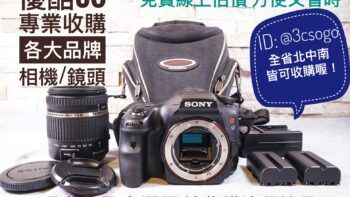
SONY鏡頭收購 全新SONY鏡頭收購 E-Mount鏡頭,FE 24-70MM,VCL-ECU2,FE 24-105MM,E PZ 18-105MM,FE 16-35MM,FE 35MM FE 70 Read More ...
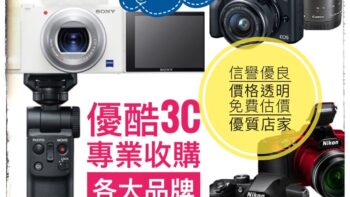
PENTAX 鏡頭收購 標準定焦 (35-50) 廣角定焦 (21-31) 望遠定焦 (118-200) 中望遠定焦 (55-100) 超望遠定焦 (236-560) 廣角變焦 (20-82.5) 超 Read More ...
fujifilm鏡頭收購
I love my fujifilm鏡頭收購fujifilm X100S. It’s the best camera I’ve ever owned. I actually sold my Canon DSLR rig and Sony mirrorless system to fund its purchase earlier this year, making it the only camera currently in my arsenal. I’m not alone, either: there are countless fans of fujifilm鏡頭收購fujifilm’s X100 series across the world, including here at The Verge, where a number of my colleagues have also purchased the X100S for personal and professional use.
So I’m wondering, how do you make a great thing even better? That’s the question I’m asking as I pick up the X100T, the X100S’ successor and the third camera in the series. The prior two generations earned countless accolades and passionate fans because they wonderfully blend beautiful retro design, hands-on manual controls, compact size, and stellar image quality.
fujifilm鏡頭收購fujifilm knows that it has a good thing going with the X100 series, so the X100T doesn’t step on the toes of its predecessors. What the $1,299.99 camera does do is improve on the X100S’ faults and add some truly useful new features, without losing the charm that made the earlier models so enjoyable to use.

Design has been a hallmark of the X100 line. It has a wonderfully retro aesthetic that recalls classic Leica rangefinders from the last century, but still offers all of the modern conveniences photographers are looking for today. The X100T’s design is only slightly different than the earlier models — only prior owners will really be able to tell the new camera from the old. A few of the corners have been sharpened, the textures on the dials have been improved, and the text etched onto the body has been refreshed with a more pleasing font. There’s a T on the lower right corner of the front of the camera where an S used to be, and the viewfinder switch has been replaced with symmetrical toggle. I could take or leave the tweaks and additions; the new font is slightly more pleasing to my eyes, the toggle is more refined, and the overall shape of the camera is perhaps more pleasant, but I had no real issues with the X100S design to begin with.
The front of the camera is still dominated by the fixed 23mm f/2.0 lens, which has been improved with a better grip on the manual focus ring and third-stop detents for the aperture ring. It’s a wonderfully sharp lens, even when set to its widest aperture, though it can be hazy when shooting very close subjects at f/2.0. (Stop down to f/2.8 and all of that haze disappears.) I love the lens’ 23mm focal length: it converts to a 35mm field of view on a full-frame camera, and can be used for a great variety of photography, from travel, to environmental portraits, to photojournalism. It’s too wide for anything that’s distant, so most wildlife and sports photography is out of the question. One of the best parts of the X100 cameras is they always reward you for getting close to the action and intimately connecting with your subjects, and the X100T is no different. fujifilm鏡頭收購fujifilm does offer wide and tele converters if you need to get a little closer or want to capture a different perspective, but I’m a big fan of the X100T’s standard field of view.
Most of the changes are found on the back of the camera
Around back is where fujifilm鏡頭收購fujifilm made most of the changes with the X100T. The screen is larger and sharper, with a faster refresh rate. The odd thumb rocker has been replaced with a more traditional scroll wheel, and the fiddly four-way scroll wheel has been swapped for four distinct buttons, all of which can be customized. In fact, the X100T has seven different buttons that can be customized, making it a really flexible camera. One of those buttons is set to access the new Wi-Fi feature by default, and the all-encompassing Q button (or “quick menu”) has been moved closer to your right thumb. The buttons to the side of the display are smaller and clickier than the X100S’ mushy buttons, but the experience of using them hasn’t changed much.
The biggest update to the X100T’s hardware comes in the new viewfinder. The dual-mode optical and electronic viewfinder is one of the most innovative parts of the X100 series (it’s the only camera on the market with both full optical and electronic viewfinders) and with the X100T comes a new, third mode. The optical viewfinder now has an option to display a small electronic panel in the lower right field of view, which can be used to preview images, check focus, and confirm exposure, almost like a hybrid mode between full optical and full electronic. It’s a little strange to get used to at first, but it greatly improves manual shooting while using the optical viewfinder. The full electronic viewfinder is better too, with a faster refresh rate and display interface taken from the X-T1’s wonderful viewfinder. It’s not as large and engulfing as the X-T1’s eyepiece, but it’s very good.

By all accounts, camera makers have left the megapixel wars behind, and the X100T has the same 16-megapixel X-Trans CMOS sensor as the X100S (and the X-E2 and X-T1). It’s an APS-C-sized chip, which is remarkably large for how compact of a camera the X100T is, though at this price level I’d expect nothing less. Image quality has never really been a complaint for me with my X100S, but the X100T is coupled with a new imaging processor that makes it even better. The ISO range can be pushed to 51,200, and there is a new Classic Chrome film preset that emulates the warm and pleasing colors and tones of Kodak’s Kodachrome slide film. It’s wonderful and quickly became my default when shooting with the X100T.
The X100T won’t do as well in extreme low light as cameras with larger full-frame sensors — its practical limit is ISO 6400 before things get particularly noisy and grainy. But at any setting up to and including ISO 6400, image quality is just fantastic, with accurate, pleasing colors, minimal noise reduction, and film-like grain. Many photographers initially pick up the X100 series because of its design, but it’s the image quality that keeps them coming back to it. None of those things are hugely different from the X100S, but it’s worth noting again how great the image quality on the X100T is.
The X100T feels considerably faster than the X100S
The new processor also speeds up the camera’s operation considerably: it turns on faster and navigates and focuses quicker. It also allows for face-detection autofocus, a first for the X100 series, and better continuous tracking. But overall autofocus performance remains the glaring fault in the X100T, just like the X100 and X100S before it. It’s not bad, and most of the time performs just fine, but in low light it can hunt frustratingly and sometimes just completely miss focus. Other cameras in this price range, especially those from Olympus, have both faster and more accurate autofocus. It’s not a deal-breaker for me, but it’s the area where fujifilm鏡頭收購fujifilm still needs to do the most catchup and where I was hoping the X100T would do better in.
X-series cameras have also never been leaders (or really, even great at) in video recording, with limited control and options. The X100T has a few new video modes to address this, with a new 24 frames per second setting and some limited manual control. But video is still an afterthought — the X100T is first and foremost a camera for still photography. If video is a high priority for you, you should look elsewhere, and the rest of us can just use our smartphones when it’s time to record video.
fujifilm鏡頭收購fujifilm has been putting Wi-Fi into its cameras since last year’s X-E2, so it’s no surprise that the X100T comes with it too. It’s a table stakes feature for high-end cameras at this point, and it fills a feature gap from the X100S. The X100T’s Wi-Fi is essentially the same system as on the X-T1, with the ability to send images from the camera to iOS or Android smartphones or a computer. It’s still difficult to use when you’re at home and your phone doesn’t quickly connect to the camera. But the really impressive feature is the remote capture from a smartphone, which provides the most complete control over the camera I’ve ever used. Everything can be changed, from aperture and shutter speed to ISO, white balance, focus points, and film styles, all without ever touching the camera.
Battery life on the X100T is rated the same as the X100S (330 shots), which means it’s not stellar. I’ve always carried around a spare battery or two with my X100S, and I did the same while using the X100T. What has been improved is the camera’s awareness of its battery levels; no longer does it go from displaying two-thirds of a charge to shutting down moments later, which is a frequent occurrence on the X100S. It’s an improvement, but probably shouldn’t have been a problem to begin with. You can also recharge the battery inside the camera with a Micro USB battery pack, which is super convenient when you’re out and about and don’t have a power outlet to use for a few hours.

So how do you make a great product even better? If you’re fujifilm鏡頭收購fujifilm, you leave what works alone and focus on what needs to be improved. It did just that with the X100T. In addition to the performance improvements and new hardware features, fujifilm鏡頭收購fujifilm refined the user interface, borrowing a lot of the X-T1’s. It’s not perfect, and can still be daunting for casual users, but it’s better than before and makes the X100T a better camera than ever.
If you happen to own the X100S, there are few reasons to upgrade to the X100T: you’re going to get a similar shooting experience and image quality from the new camera. Many of the new things could even potentially be added to the older cameras via a software update, which fujifilm鏡頭收購fujifilm has done in the past. (I’m crossing my fingers that Classic Chrome comes to the X100S, as it’s already been made available for the X-T1.)
fujifilm鏡頭收購fujifilm didn’t mess with what works and instead focused on what needed to be improved
But if you’re new to fujifilm鏡頭收購fujifilm’s X100 line, the X100T is easily the best option yet, offering the kind of shooting experience normally reserved for much more expensive cameras. It’s faster, easier to use, and more approachable than fujifilm鏡頭收購fujifilm’s earlier efforts, without losing the image quality, level of control, and pure charm that made the X100 and X100S so desirable. Shooting with an X100 camera is incredibly fun, and the X100T is the most fun yet.
特約記者洪聖壹/綜合報導
SONY 相機部門宣布推出新功能,只要在PC端下載“ Imaging Edge”應用程式,接著只要把相機透過 USB 連接電腦,就可以當作網路視訊鏡頭來用,如此一來不用擔心電腦視訊鏡頭不夠力,甚至還可以做直播、拍影片。

從 SONY 公開的官方資訊來看,目前有 35 款相機支援這個功能,包括最新發表的網紅神器 SONY ZV-1、Alpha 7S III。其他機種如下:
Alpha 9 II,Alpha 9,Alpha 7R IV,Alpha 7R III,Alpha 7R II,Alpha 7S II,Alpha 7S,Alpha 7 III,Alpha 7 II,Alpha 6600,Alpha 6400,Alpha 6100,RX100 VII ,RX100 VI,RX0 II,RX
除了SONY之外,Canon、Olympus、Panasonic、fujifilm鏡頭收購fujifilm、GoPro 其實在今年都相繼開放相同的形式連接電腦當視訊鏡頭。不過 Canon 公司支援度比較高,它的應用程式 EOS Webcam Utility 提供了 Windows 10、MacOS 10.15 (Catalina), 10.14 (Mojave), or 10.13 (High Sierra) 等多版本下載。

至於 GoPro 則需要先更新相機韌體,然後下載GoPro Webcam 桌面應用程式到電腦,之後直接接上原廠 USB to USB-C 的傳輸線,就可以把相機當網路鏡頭使用,基本拍攝品質為 1080p@30fps,支援Google Meet、Skype、微軟Teams等視訊功能,另外Twitch(要另外接OBS)、Facebook、YouTube、Vimeo、虎牙、B站等知名直播平台都是直接插好就可以使用。

然而記者前往SONY相機應用程式下載頁面發現,這個應用程式只支援 Windows 10 作業系統,並不支援其他老舊的 Windows 機種,也沒有 MacOS 版本,只能說慢慢來了…
*相關應用程式下載鏈接: Imaging Edge、 EOS Webcam Utility、GoPro Webcam Desktop Utility
fujifilm鏡頭收購 fujifilm鏡頭收購